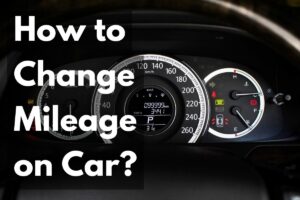D/S in a car refers to the Drive/Sport mode, a transmission setting. This mode alters shift patterns for improved performance.
Understanding your vehicle’s functionality optimizes the driving experience. The D/S setting on a car’s gear selector serves this purpose. Typically found in automatic transmissions, toggling to ‘Sport’ mode sharpens vehicle response. It holds gears longer for better acceleration and agility, tailoring the drive for enthusiasts seeking a dynamic ride.
Drivers benefit from the versatility of having both efficient and spirited driving options in one vehicle. Correct use of D/S enhances control under varying conditions, contributing to a more engaging and tailored driving experience. Remember, selecting D/S mode can affect fuel efficiency due to the aggressive shifting patterns. Always consider the driving scenario to select the appropriate mode for your journey.
Understanding Transmission Systems

When we dive inside the workings of a car, the term D/S often comes up. This refers to the car’s transmission system, which is the complex mechanism that transmits the engine’s power to the car’s wheels. Let’s break down the two main types of transmission systems and understand their functions and differences.
Automatic Transmission
Easy to use and comfort-driven, the automatic transmission does the gear-shifting work for you. Here is what sets it apart:
- Self-shifting gears: No need for manual gear changes.
- Hydraulic or electronic control: Ensures smooth driving.
- D/S mode option: ‘D’ for Drive, ‘S’ for Sport mode.
In ‘D’ mode, the car focuses on fuel efficiency and relaxed driving. ‘S’ mode sharpens performance, adjusting the gear shifting for better acceleration.
| Mode | Function |
|---|---|
| D | Efficient, relaxed |
| S | Performance, swift shifts |
Manual Transmission
A manual transmission system gives the driver full control over gear changes. Check out its key aspects:
- Stick shift: Driver changes gears manually.
- Clutch pedal: Must be used with each gear change.
- Driver engagement: Provides a connected driving experience.
The manual system is prized for its direct control and is often favored by driving enthusiasts. It can be more fuel-efficient in skilled hands.
D Vs. S Mode
Understanding the ‘D’ and ‘S’ modes on your car’s gear selector can enhance your driving experience. These modes offer different performance dynamics. Here’s how they differ and when to use each.
Difference Between D And S Modes
The ‘D’ (Drive) and ‘S’ (Sport) modes in a car’s transmission govern speed and power. ‘D’ mode balances fuel efficiency with power, while ‘S’ mode prioritizes performance, altering shift patterns for a zestier drive. The table below outlines their functions:
| Mode | Main Function |
|---|---|
| D (Drive) | Economical, everyday driving |
| S (Sport) | Enhanced acceleration, sporty driving |
When To Use D Mode
- Regular commuting
- Focused on saving fuel
- City or highway driving
- Seeking a smooth, quiet ride
Select ‘D’ mode for daily travel. It keeps revs low and maximizes efficiency. This mode is perfect for most driving scenarios, offering a relaxed experience.
When To Use S Mode
- Overtaking vehicles
- Driving on hilly terrain
- Want a sportier feel
- Need quicker acceleration
Switch to ‘S’ mode for spirited driving sessions. It keeps the engine in higher revs, ready to unleash power. Ideal for dynamic driving and when quick acceleration matters.
Benefits And Drawbacks Of D/S Modes

Cars today offer various driving modes, such as D (Drive) and S (Sport), each with distinct features for optimal performance or efficiency. Knowing when and how to use these settings can enhance your driving experience. Let’s explore the pros and cons of D and S modes in cars.
Benefits of D Mode
Benefits Of D Mode
The D mode, or Drive mode, is the default setting for automatic transmission vehicles.
- Suitable for daily use, offering a balance between fuel economy and performance.
- Smoother gear shifts make for a comfortable ride.
- Optimizes performance for a variety of road conditions.
Benefits of S Mode
Benefits Of S Mode
S Mode stands for Sport mode, tailoring the car for dynamic driving.
- Enhanced acceleration for a thrilling driving experience.
- Shift points are higher, making more power available.
- Improved handling on curves and during overtaking.
Drawbacks of D Mode
Drawbacks Of D Mode
While versatile, D mode is not without its drawbacks.
- Lacks the responsive feel of a manual gearbox.
- Can be less exciting for driving enthusiasts.
- May not provide the same level of control in high-performance situations.
Drawbacks of S Mode
Drawbacks Of S Mode
Sport mode focuses on performance, but it comes with trade-offs.
- Increased fuel consumption due to higher RPMs.
- Engine and transmission wear may accelerate.
- Can be overkill for regular city or highway driving.
Frequently Asked Questions About D/S On Car
Is It OK to Shift From D To S While Driving?
Yes, you can shift from D (Drive) to S (Sport) mode while driving, but ensure your vehicle speed matches the transmission setting to avoid damage. Always consult your vehicle’s manual for specific guidance.
What Is The S On The Gear Shift?
The ‘S’ on a gear shift stands for ‘Sport mode,’ enhancing the vehicle’s performance by altering the transmission’s shift patterns.
What Does Ds Do In A Car?
The “DS” in a car typically stands for “Drive Sport” mode, which sharpens the vehicle’s acceleration and gear shifting for a more dynamic driving experience.
Can You Drive In Sport Mode All The Time?
Yes, you can drive in sport mode all the time, but it may lead to increased fuel consumption and faster wear on vehicle components. Always consult your vehicle’s manual for recommended usage.
Conclusion
Navigating through the functions of your vehicle enhances your driving experience. Understanding D/S mode now means you can optimize performance and control. Next time you’re behind the wheel, consider how this feature can benefit you. Drive smart, and let D/S mode fine-tune your journey.




